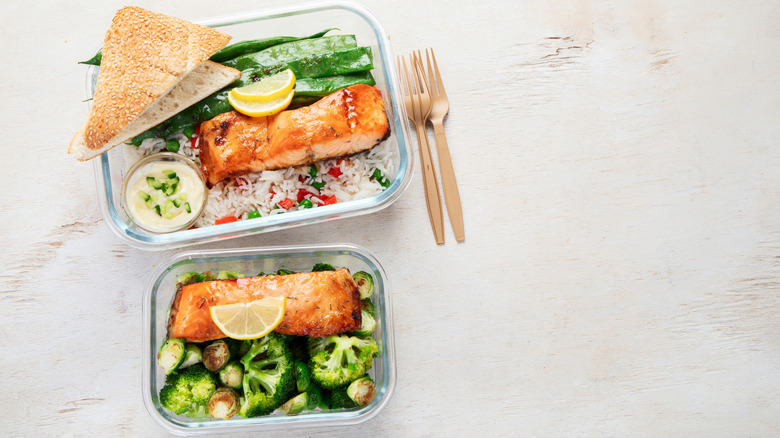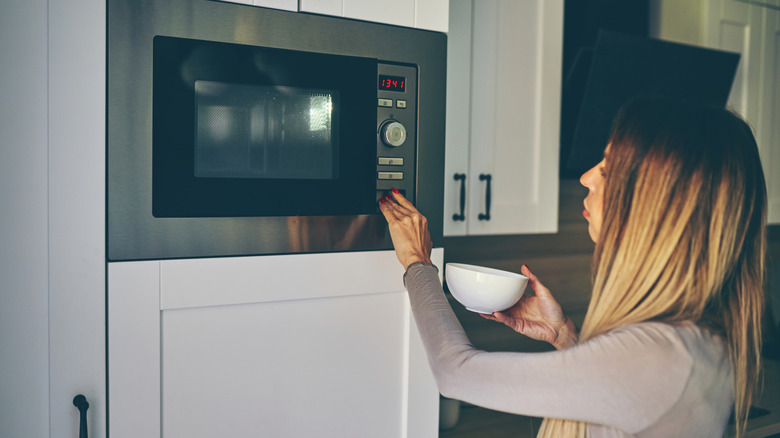Why Reheating Leftover Seafood In The Microwave Is A Major No-No
Seafood is one of those foods that can be absolutely perfect one day and borderline inedible the next, and nothing ruins it faster than a spin in the microwave. It's tempting because microwaves are quick, easy, and sitting right there — but there are some things that just don't belong in the microwave. The problem is twofold in that it's incredibly easy to overcook delicate proteins in a microwave, and even if you nail the timing, the smell can take over your kitchen (and possibly the rest of your home) in minutes. That fishy aroma will not be going anywhere anytime soon.
Truthfully, seafood's texture and flavor depend on gentle, controlled reheating, which is something a microwave can't really deliver. Those bursts of uneven heat from your microwave can make shrimp rubbery, fish dry, and scallops chewy before you even hit "stop." If you're putting in the effort (and money) to enjoy good seafood, it's worth reheating it the right way.
Seafood overcooks fast in the microwave
Seafood cooks quickly when it's nice and fresh, which is great news for weeknight dinners but bad news for reheating. Microwaves don't heat food evenly, so by the time the center of your salmon fillet is warm, the edges might already be overdone. And once seafood crosses that overcooked line, there's no coming back because it loses moisture, the texture turns unpleasant, and all the delicate flavor you loved the first time disappears.
Even the smallest pieces, like crab, can go from tender to tough in under a minute in the microwave. That's because the appliance blasts food with high, direct heat, and it's especially bad with thinner cuts or smaller portions. Gentle reheating (like using the stovetop or oven) lets the proteins warm up without going through a second full-on cooking process. If you're using the oven, wrap your seafood loosely in foil with a splash of liquid (like broth, wine, or even water) to lock in moisture. On the stovetop, low heat and a covered pan will help warm it through without drying it out. Yes, it's slower, but it's also the difference between a delicious leftover meal and one you regret making.
If you must reheat seafood in a hurry, a lower microwave power setting can reduce some of the damage. But even then, you're still dealing with uneven heating, and the results are unlikely to match what you'd get from more controlled methods. In short, the microwave might win for speed, but it's a loss for texture every time.
The lingering smell of seafood in your microwave isn't worth it
Microwaving seafood can also present the unintended consequence of causing your entire home to stink. When seafood heats up too quickly, certain compounds become more intense, and the aroma can go from mild to overpowering in seconds, whereas in a restaurant kitchen, there's ventilation to deal with that. At home, especially in a small space, it tends to hang around forever; if you're in a shared environment like an office, the smell factor is even more of a problem. It's the kind of scent that travels fast and lingers, making you very popular with exactly no one.
For those who want to go a step further, reheating seafood in a sealed parchment packet or foil pouch can lock in the smell and the flavor at the same time. It's a technique that works beautifully for both oven and stovetop reheating (you shouldn't put metal in the microwave), and it might just save you from having your whole kitchen smell like low tide for the rest of the day.


